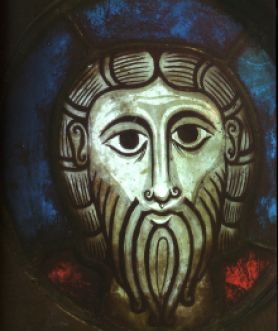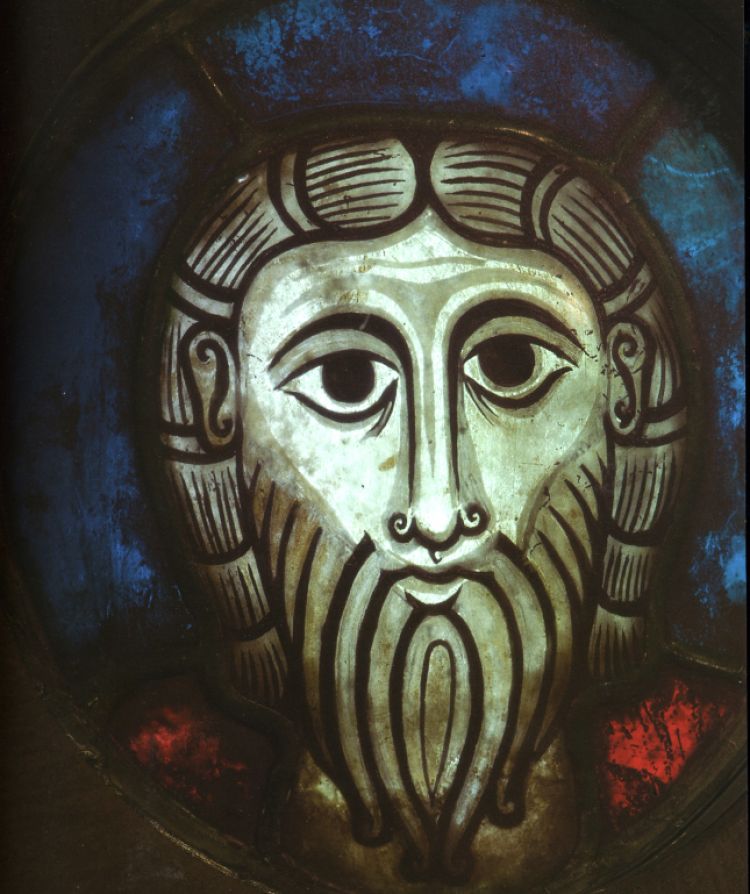Wissembourg Christ Head

A place of honour in the arcade of the former cloister goes to the oldest piece of figured stained glass in France: the famous Wissembourg head. This is probably a fragment of a larger figure of Christ. It is believed to have come from the Benedictine abbey church at Wissembourg, in the north of Alsace. The church was rebuilt in 1040 and richly decorated after 1056. However, the origin of the head is not conclusively proven. The Darmstadt museum has fragments of stained glass depicting a face which date from the 9th century. These were discovered during excavations at Lorsche abbey, in Hessen.
Missing parts of the Strasbourg head were replaced with pieces of modern glass around 1950. It was originally painted using a technique described by a monk named Theophile around 1100. The grisaille – or grey monochrome – was applied in three layers of differing intensity: the first very light in places; the second less diluted, for the shading; the third very dark, for picking out the features. The full-frontal stylisation of the face and its severe expression give the figure a primitive forcefulness.
This figure derives from Byzantine tradition. However, the delight in ornament, particularly evident in the edging of the garments, has more in common with the goldsmith work of the Meuse area. Though most of the panel is well preserved, there is some evidence of earlier restorations. The head of the dignitary on the left, for instance, was replaced in the mid-14th century.
